Renewables Pho Sure Are Keene in This New England Town
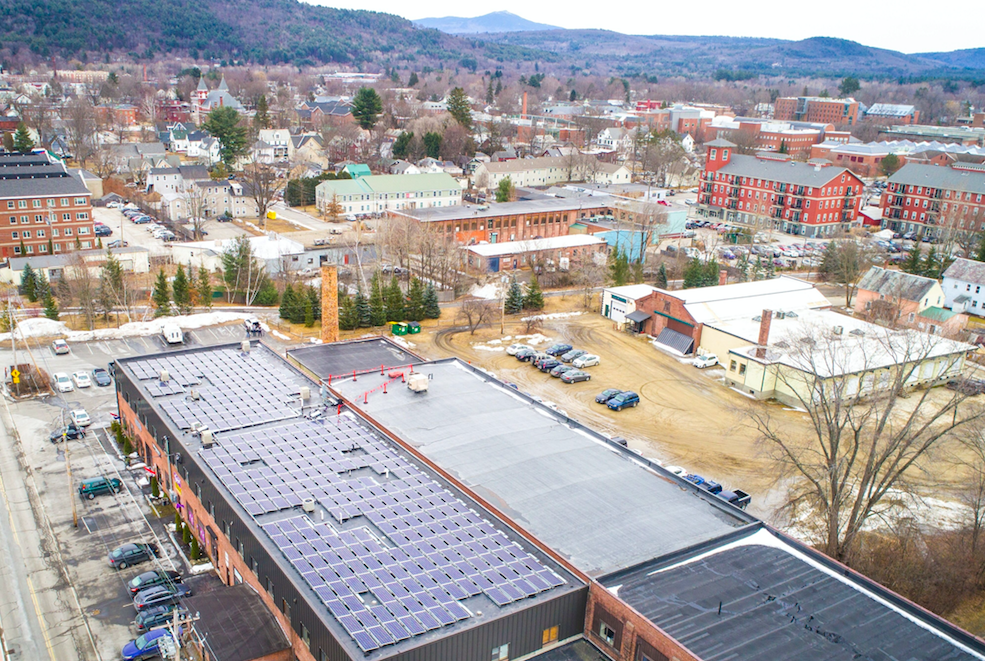
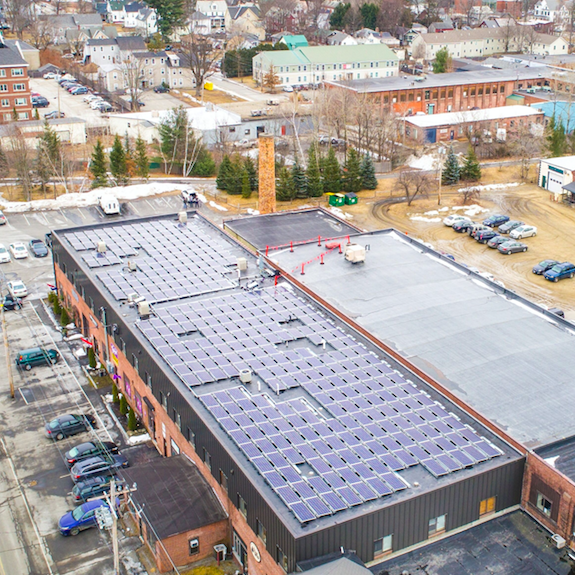
Keene, New Hampshire, was in the news earlier this year over a new restaurant's controversial name. But now the town can boast about its role in the renewables revolution.
If you live outside New England, perhaps you’ve heard of the southwestern New Hampshire town of Keene because of the kerfuffle earlier this year over a new Vietnamese restaurant. The owners of Pho Keene Great thought they found a golden name for their new restaurant on Keene’s Central Square. City officials, however, thought differently, and a bureaucratic battle ensued, with many of the volleys being lobbed from Facebook and Twitter. Largely because of the First Amendment and an outpouring on social media support, Pho Keene Great won.
But in more recent news, Keene has also won, as the town took another step closer to its 2030 goal of having 100 percent of its power derived from renewables.
The story is very New England, or could we say, very post-industrial America. In the case of Keene, a new solar power rooftop system atop an old silk textile mill is generating clean power on what is now a mixed-use commercial development that includes office, retail and storage space. New England’s old textile mills make for great work-live spaces but aren’t always the most energy-efficient. Solar panels can help on this front—and prove that “smart cities” don’t have to be in the western U.S. or within America’s largest urban areas.
Encore Renewable Energy, which managed the Keene project, is already leaving its mark across New England with 60 solar projects in neighboring Vermont alone. According to Encore, this 140-kilowattpeak (kWp) solar installation atop the historic Silk Mill property will offset over 2,300 metric tons of carbon dioxide, equal to the emissions of almost 6 million automobile miles, over the next 25 years. A renewables grant from the New Hampshire Public Utilities Commission helped make this project a reality.
To paraphrase that previously mentioned star restaurant’s name, this is . . . pretty great news.
The Silk Mill project will help New Hampshire inch toward its long-term renewables goal. Currently, the largest nuclear power plant provides over half of the state’s electricity. Almost half of New Hampshire’s households rely on home heating oil to stay warm during those frigid winter months. But wind power outpaced coal for electricity generation in New Hampshire for the first time in 2016, so the state’s 2025 goal of sourcing 25 percent of its power from renewables shouldn’t be too uphill of a climb.

As of press time, it’s not clear whether the monthly bills for Pho Keene Great (pictured above) will benefit from this project. What is clear is that projects like this new one in Keene can help New Hampshire’s state motto of “Live Free or Die” (at least when it comes to some monthly bills) become a tad more realistic.
New Hampshire’s residential electricity bills trend lower than the national average; but pho sure, the promise of even lower bills for the state’s homes and business will come across as . . . great.
Image credits: Encore Renewable Energy; Pho Keene Great/Facebook
When Policy Gets Personal: Postmates Takes a Stand for Immigrants' Rights
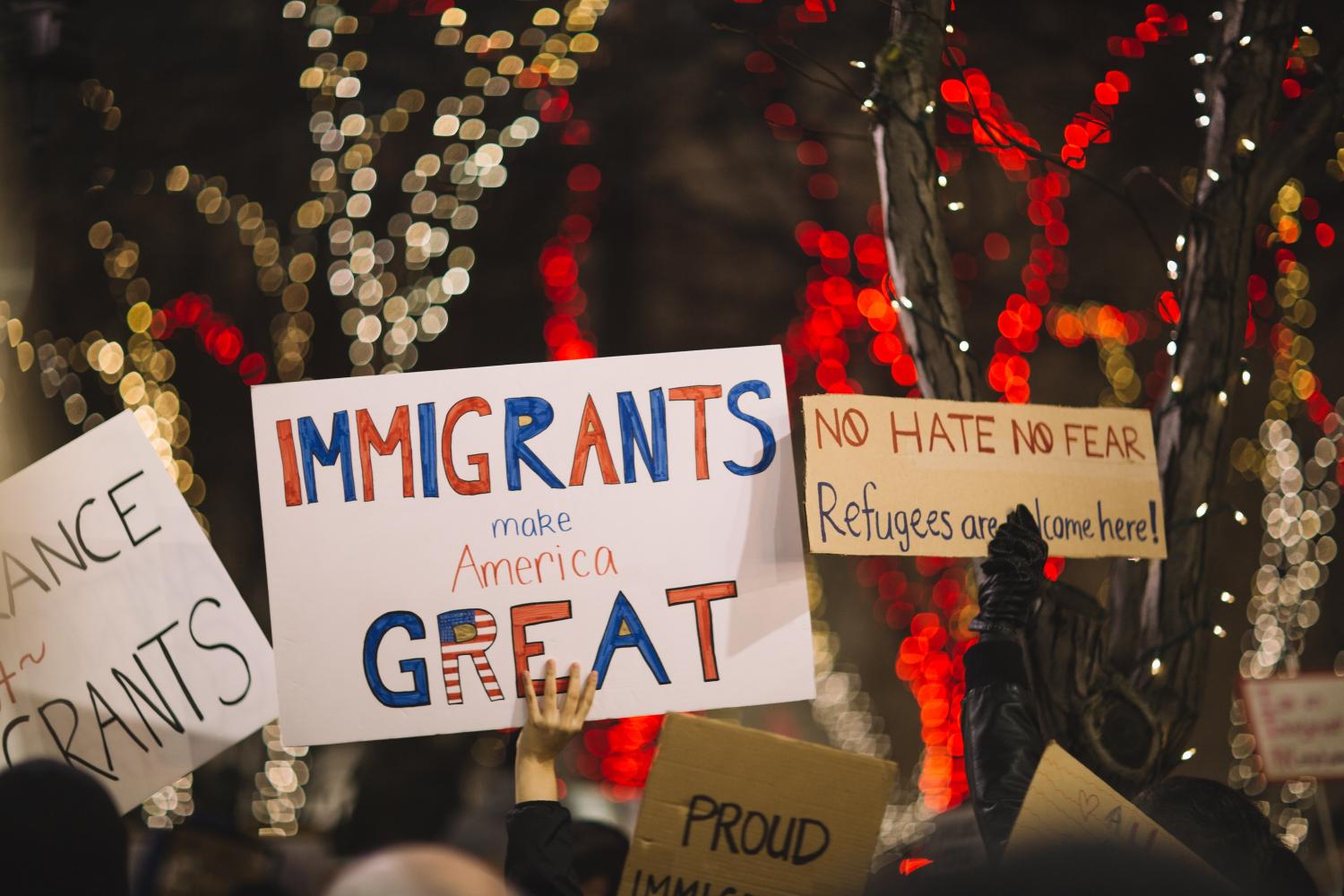

This article series is sponsored by Silicon Valley Community Foundation and produced by the TriplePundit editorial team.
As tensions boil around U.S. immigration policy, some of the country’s largest companies are taking a public stand for immigrants' rights. The U.S. tech sector increasingly turns to the global talent pool in order to build its workforce and as such has been particularly vocal.
In 2017, when the Donald Trump administration imposed restrictions on travelers from Muslim-majority countries, more than 150 Silicon Valley tech companies filed a brief in opposition. The brief came after a host of big-name tech CEOs voiced their opposition to the travel ban in public statements, employee memos and social media.
Bastian Lehmann, co-founder and CEO of the on-demand delivery company Postmates, penned a poignant blog post in response to the ban, boldly writing: “I no longer believe it to be reasonable to remain silent.” Lehmann, an immigrant himself, went on to make both a moral and an economic case against restricting immigration and travel to the U.S.
While celebrating the country’s storied history of embracing “the diversity cultivated through immigration,” he noted that upholding these values is more than just the right thing to do. For companies like Postmates, it’s also good business. “We choose not to discriminate [against] individuals based on where they are from,” Lehmann wrote, “and it has suited us well as we have been able to hire and employ the most talented people from around the world.”
The business case for advocacy on immigrants’ rights
Postmates, which filed for an initial public offering (IPO) earlier this year, is one of the top four delivery apps in the U.S. by market share. Its on-demand delivery platform for everything from food to household products now reaches around half of all U.S. households.
Unlike other gig economy companies like ride-sharing giants Uber and Lyft, the Postmates marketplace is three-sided: It connects local merchants to customers via an app and taps independent contractors (or small-p "postmates," a term used to describe the company's employees as well) to make deliveries. This high exposure to local stakeholders presents a “very strong business interest in wanting to stand up for inclusivity in the communities that we are able to call home,” said Vikrum Aiyer, vice president of public policy and strategic communications for Postmates.
Over the past two years, Postmates has joined peers in the tech sector in amicus briefs and comments to the Department of Homeland Security in opposition to restrictions on H-1B visas for highly-skilled workers, roll-backs of provisions for immigrant founders, and the so-called “zero-tolerance” immigration policy that resulted in thousands of children being separated from their parents at the U.S.-Mexico border.
“We're only one small voice in this broader ecosystem of stakeholders that care about these issues. But we felt it was important to us to do right by our marketplace, to do right by the diversity that the company represents and frankly thrives upon, and to do right by our corporate values,” Aiyer told us.
In their brief against the travel ban, Postmates and its peers in the tech sector emphasized the economic argument alongside the moral imperative, citing the “substantial harm” the ban would inflict on “U.S. companies, their employees and the entire economy.”
Aiyer, a former White House senior advisor under President Barack Obama, further underscored this point in the context of Postmates’ three-sided marketplace—which touches stakeholders at all levels of more than 400 cities across the U.S., many of them immigrants or members of immigrant families. “This is not just a moral issue,” he said bluntly. “It is also an economic competitiveness issue.”
Central to Postmates’ advocacy is an ongoing partnership with the American Civil Liberties Union (ACLU), culminating in educational initiatives for Postmates drivers, awareness campaigns for its customers, and funding to benefit the ACLU’s fight for immigrants’ rights.
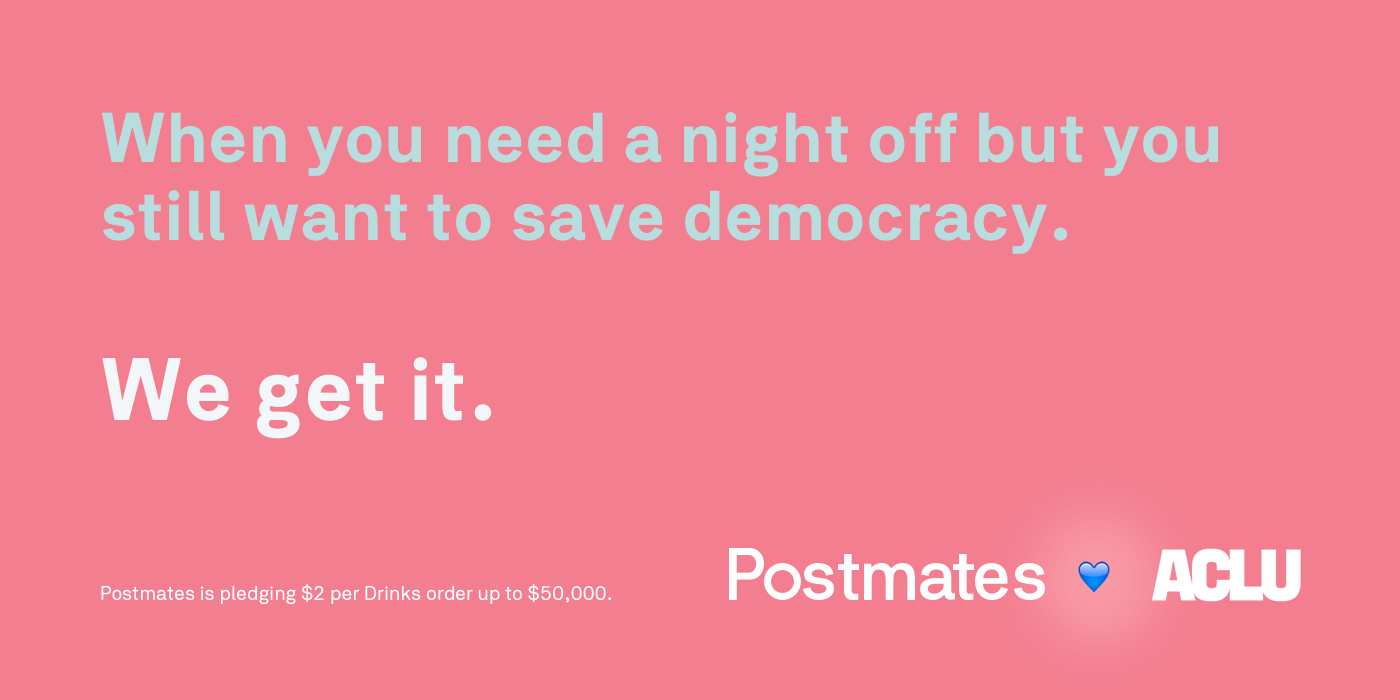
Driver feedback sparks collaboration with the ACLU
In 2017, when rumors began to circulate that the Trump administration would end the Deferred Action for Childhood Arrivals (DACA) system—which protects undocumented immigrants who came to the U.S. as children from deportation, if they meet certain criteria—word spread quickly among Postmates drivers.
“What was quite disheartening is that we actually heard questions from our fleet of postmates asking whether they were still able to perform services on the platform because of what seemingly felt like an attack on young people who grew up in this country,” Aiyer told TriplePundit.
Some queries came from DACA recipients (also known as Dreamers) who drive for Postmates, while others came from drivers who were concerned about friends and family members, Aiyer explained. Both perspectives were concerning to the company, as they indicated that its stakeholders felt “unsafe,” Aiyer said. “We started working with the ACLU to understand the rights of individuals,” he continued.
The company compiled the ACLU’s latest “know your rights” information into an email campaign and announcement on the driver-facing side of its app. The campaign proved to be a teachable moment for the company, and it set the stage for ongoing action and advocacy.
“Some may say, 'That's kind of just copying and pasting information and flipping it around. What's the big deal about that?' But I think what this showcases for us is that people who have megaphones, no matter how big or how small … ought to use them,” Aiyer said.
For Postmates, that megaphone takes the form of 250,000 merchants, hundreds of thousands of drivers, and several million customers in the U.S. alone—positioning the company to amplify vital information from credible organizations like the ACLU. “From that point forward, we stayed closely in touch with the ACLU on other activations that we can engage in to raise awareness,” Aiyer said.
The company has since run public awareness campaigns in partnership with immigrant-owned businesses like The Halal Guys, as seen in the video below, and donated proceeds from app-based sales to support the ACLU’s work defending immigrants’ rights.
An ongoing partnership bears fruit
As immigration-related topics find their way into the news with increasing regularity, the Postmates-ACLU partnership—and many others like it—are constantly evolving.
“We are a smaller business compared to [others in the tech space], and that gives us the ability to experiment with some risk-taking. It also allows us to monitor, adjust and account for what it exactly means to partner with the ACLU or take an immigration stance,” Aiyer explained. “When you run an experiment and you take a stance and it upsets the customer and it’s one less purchase, is that reason enough to not stand up for that very community that is impacted by those policies, which will ultimately hurt your ability to thrive as a business?”
His inclinations are backed up by data that indicates purpose is influencing purchasing decisions: Nearly two-thirds (63 percent) of global consumers prefer to buy goods and services from companies that stand for a shared purpose that reflects their personal values and beliefs, according to a 2019 survey.
Of course, personal values are different for everyone—and it undeniably takes courage to step into the fray and brave potential blowback from customers and other stakeholders. But a growing number of companies have decided it’s worth the risk to stick with their values and learn from their journey along the way.
“Online and on social media, you get rampant feedback one way or another—some people agree with what we’re doing; some disagree; some just look at us as the delivery system for their burritos or their Thai food and don’t really want to know about anything else,” Aiyer said. “At the end of the day, that confirms what we believe this country to be, which is a marketplace of ideas.”
Image credits: Postmates; Nitish Meena and Josh Johnson via Unsplash
AARP Enters Into an Alliance with the Golden Arches


McDonald’s and AARP announced they have entered into a partnership to help the company and its thousands of franchisees get connected to what could be up to 250,000 potential employees in the 55-and-older demographic.
People are living longer. Companies are having a more difficult time finding good help. Yet many of those who are part of the “good help” crowd say they have a hard time finding jobs. And for older citizens, relying on Social Security for income isn’t the most secure way live month-to-month and year-to-year.
To that end, McDonald’s and the massive retiree advocacy group AARP announced they have entered into a partnership to help the company and its thousands of franchisees get connected to what could be up to 250,000 potential employees.
The program will deploy several tactics, including job listings on AARP’s job board as well as pilot programs in five states that will match potential employees with McDonald’s outlets in search of reliable employees.
At the surface, this is a match that makes sense. The U.S. Department of Labor has concluded that AARP’s target demographic, the 55-and-older crowd, is the most rapidly growing segment of the American workforce. And as anyone who remembers being a teenager can verify, those who are high-school or college-aged often have the hardest time getting up in the morning. That reality does not jive well with the evolving strategy of McDonald’s and its competitors, which views breakfast as a growing business opportunity.
The result is another open door for older American workers, who as we’ve said before, are America’s most undervalued asset. Many American companies step over themselves in tailoring their work culture to attract millennials, but this has often come at the expense of the over-50 crowd, who often find themselves pushed out of companies and find future employment prospects limited.
Quite frankly, for a fair number of seniors, no matter what their level of education or work experience may be, working the morning shift at the Golden Arches is hardly the worst option in the world. If you are retired, working at breakfast makes sense—you could be done by noon, and incidentally, you won’t come home smelling like burgers. Of course, if you’re a night owl, there is always the late-night shift—which again, many younger workers do not necessarily find attractive.
While many of us decry about the proliferation of fast food outlets, here’s another point to consider: Most employees shouldn’t have to drive, walk or take public transport too far to these workplaces. The catch, however, is navigating through all those complicated Medicare and Social Security rules when it comes to earning additional income—no matter how loudly AARP and McDonald’s want to tout this program, this is one caveat they need to address as well.
Image credit: Andreas160578/Pixabay
Retailers Now Putting the Squeeze on Tobacco (and Vaping)
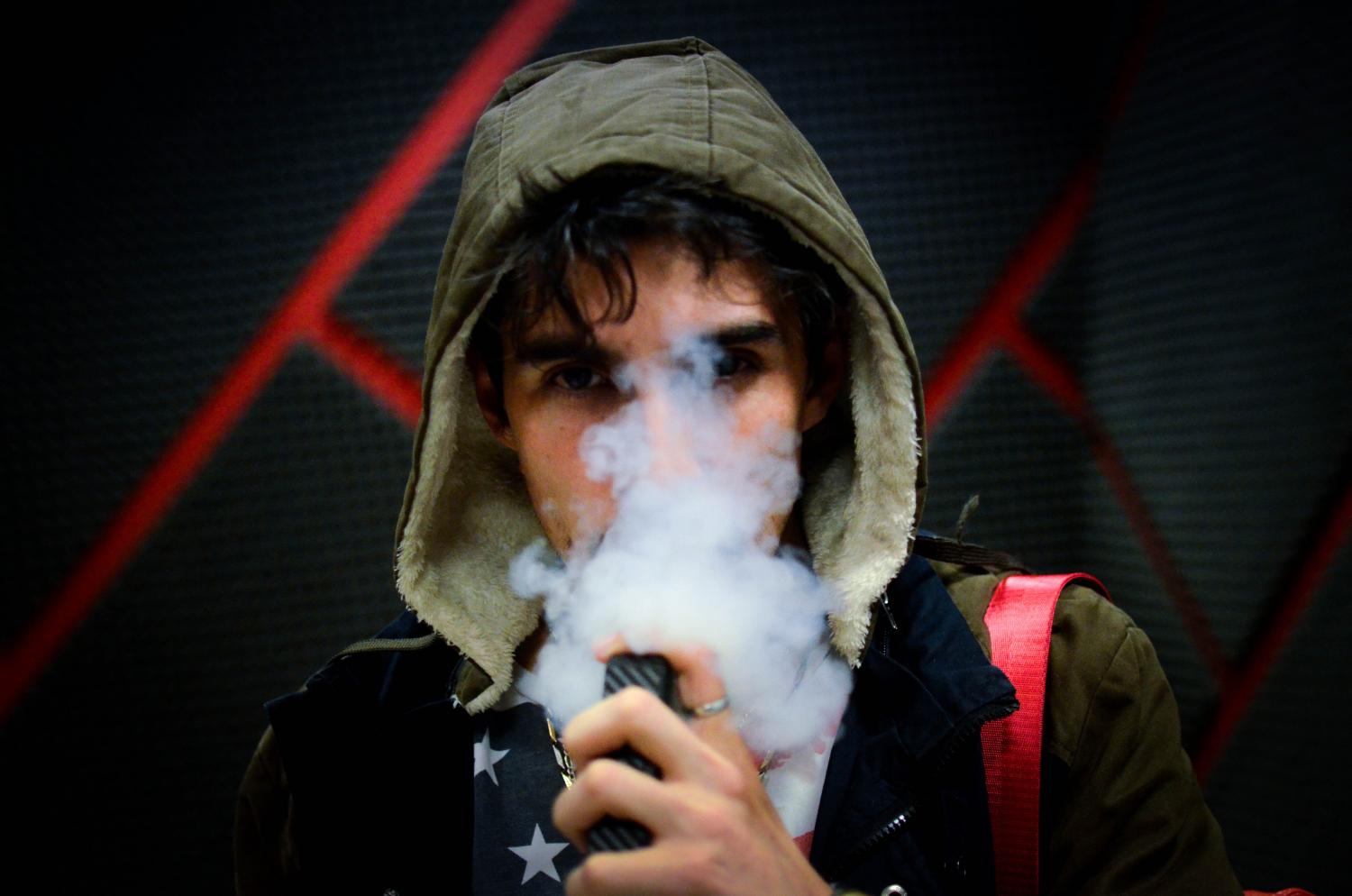

Eyes must be rolling at both the headquarters and retail outlets of CVS with the news that Walgreen's and Rite Aid will stop selling tobacco products to anyone under 21 years of age. After all, CVS saw its profits decrease when it stopped selling tobacco products over 4 years ago.
The newswires have been buzzing with reports earlier this week that Walgreens plans to stop selling tobacco products to consumers under the age of 21. In what seemed to be only a few moments later, Rite Aid said it would do the same, cutting off access to tobacco products for anyone under 21 within 90 days. Walgreens' new policy is to take effect on September 1.
Eyes must be rolling at both the headquarters and retail outlets of CVS. After all, the company has taken a hit in profits since it announced it would stop selling tobacco, period, full stop, the end, back in 2014.
"Consider the statistics: 480,000 people die each year from tobacco-related illness; 42 million American adults and 3 million middle- and high-school students continue to smoke," said Eileen Howard Boone, director of corporate social responsibility and philanthropy at CVS Health and president of the CVS Health Foundation, told TriplePundit almost four years ago. She went on to say that contributing to these shocking statistics conflicted with the company's purpose of "helping people on their path to better health." Moreover, she made it clear that tobacco products pose "a significant threat to public health."
While Boone said there were many factors CVS considered in making the decision, “In the end, it was just the right thing to do for the health of our colleagues and our customers."
Tobacco companies assumed the long backlash against smoking could result in a new focus on vaping products, which could keep profits flowing while reducing the public health risk that conventional tobacco products are known to impose. But that hasn’t gone exactly as planned.
“Take a look at JUUL, whose damage was accelerated by rapid scale,” said Barie Carmichael, senior counselor at APCO Worldwide, Batten Fellow at The University of Virginia’s Darden Graduate Business School and with the late James Rubin, is co-author of Reset: Business and Society in the New Social Landscape, in an interview earlier this year with 3p.
The e-cigarette startup was launched by entrepreneurs who simply wanted to find a healthier alternative to smoking. The problem, however, was that teens took to JUUL like wildfire—and it turns out the brands’ nifty and flavorful products contained way more nicotine than conventional cigarettes. Plenty of research has suggested excessive nicotine consumption can harm brain development in teens.
JUUL changed its marketing tactics as the news for the company got worse, but those steps have not been enough to satisfy parents and public health advocates; and its customers have not exactly been happy with the changes either. As the controversy over these products surged last fall, the company was silent on Twitter for over a month until it responded to a U.S. Surgeon General’s advisory on e-cigarettes. JUUL has since sold a 35 percent stake in the company to Altria. In a recent profile on the Financial Times, representatives for the brand suggested that transaction could help accelerate tobacco’s decline.
But if anything, public health officials, as well as CVS, should get the lion’s share of credit for tobacco’s demise. Rhode Island-based CVS, for example, has been distributing a total of over $1 million in grants to colleges and universities with the goal to increase the number of tobacco-free campuses across the U.S.
Meanwhile, the U.S. Food and Drug Administration (FDA) has been accusing manufacturers and retailers of not doing enough to curb the spread of teen vaping—and keeps identifying more health problems, such as seizures, as a result of vaping’s popularity.
“Tobacco and vaping companies have supported the push to restrict sales to youth, partly in an apparent effort to distance themselves from accusations that they marketed their products to that same demographic,” Karen Zraick and Emily S. Rueb wrote in the New York Times. “At the same time, the companies have sought provisions that limit the regulation of tobacco products. For example, the companies fought back against efforts to limit flavored tobacco products, which are popular with teenagers.”
The popularity of vaping among teenagers reached a point at which Walgreens and its competitors were regularly busted by the FDA and other regulators after inspections found it was far too easy for underaged consumers to score these “smoke-free” products.
It is admirable that tobacco companies and the retailers selling their products say they are all for the eventual demise of tobacco. But with the exception of CVS, which changed its policies long before the outcry over vaping reached a crescendo pitch, this story is actually a case where on this front, the government was ahead of the private sector in this battle over public health.
Image credit: Nery Zarate/Unsplash
How Bloomberg is Amplifying Women’s Voices in the Middle East


Bloomberg has been striving to have more women media-trained so they can go in front of the camera - the latest such effort is now ongoing in Dubai.
There’s little question that women are underrepresented in the global media sector. While companies say they are improving on this, a quick flipping of the channels on cable television often reveals man after man after man at the anchor desk—particularly in the business and finance media world. Women continue to chip away at that glass ceiling, and of course, more have entrenched themselves into leadership positions at top global companies. Scoring a coveted “analyst” guest spot on a news show could help open more doors. But many women professionals are not media trained.
Bloomberg says it is striving to change this dynamic with an initiative designed to get more women media trained so they can go in front of the camera.
Bloomberg’s funding of the New Voices program provides one-on-one media training for women executives in business and finance so they can be prepared to make appearances on various news outlets, including, of course Bloomberg. The program recently expanded to Dubai.
So why, do you ask, is Bloomberg extending this effort into the Middle East, of all places?
For a moment, toss aside any assumptions you may have about the Middle East and the status of women there—especially when it comes to the United Arab Emirates. Furthermore, many expatriate women working in the Middle East are doing so because they have opportunities otherwise unavailable (or not as well-paying) at home.
Walk into any office in the UAE, and not only is there a good chance that women outnumber men, but you’ll also find many women in senior positions. Part of the answer is that the UAE’s government, which has long sought influence on the global stage at a proportion far greater than its population (9.5 million, with about 88 percent of it expats), realizes it has to walk the walk. Hence the country’s leadership over the years has launched aggressive education, training and hiring programs for women—including one for its audacious space program.
Culturally, in many ways the Gulf is still a boy’s world, so there are plenty of incentives for women to work outside the home. Many women in the UAE feel compelled to have to work harder to get ahead. So quite frankly, they do, and often find themselves promoted into high-profile positions as a result.
By the way, this transformation in the UAE is reflected in the makeup of the country’s cabinet—which at last count includes nine women out of 32 members total (28 percent). Contrast that ratio with the U.S. cabinet at the Trump White House, which now has four women out of 21 seats—you can do the math.
Various programs in the UAE that elevate women’s voices include WiSER of Masdar, which works with academic and research institutions, women’s networking groups and corporate interests. This group’s goal is to create more education and training opportunities, which help enable young Emirati women to develop the necessary hands-on industry experience to contribute to industry. Organizations like WiSER offer the fundamental building blocks to support women’s competitiveness in the global marketplace; Bloomberg’s New Voices can serve as the visibility platform atop of those blocks.
New Voices’ work in Dubai follows progress in New York, San Francisco, London, Toronto and Hong Kong; Sydney and Mumbai will join the list later this year.
Meanwhile, Bloomberg offers these statistics to show how it's amplifying women’s voices in business and finance across various platforms:
- Bloomberg News’ worldwide database of women experts quadrupled last year to over 2,300 names.
- The percentage of women guests brought in as expert commentators on Bloomberg TV climbed to 19 percent last year, almost double from 10 percent at the end of 2017.
- The goal of New Voices is to boost that percentage to 30 percent during 2019.
- The percentage of stories that quote or cite a woman expert on Bloomberg’s front pages has surged to almost 10 percent from about 2.5 percent in March; that pace is accelerating at an average pace of 13 percent a week.
Image credits: Leon Kaye
Sustainability and Innovation at IBM: A Green Vision for ‘Big Blue’


IBM recently discussed its sustainability goals – including an effort to procure 55 percent of its energy from renewable sources by 2025 – and how the company is using technology to help solve environmental challenges.
More than five decades ago, IBM CEO Thomas Watson, Jr. stated: “Businessmen are influential leaders in public opinion. That is why it is so important that they be as open-minded and far-sighted in matters concerning the general public need as they are in questions relating to the operation of their businesses.”
Today, Wayne Balta, vice president of corporate environmental affairs and product safety at IBM, is keeping Watson’s commitment to sustainable business practices alive.
I recently spoke with Balta to learn more about IBM’s sustainability goals—including an effort to procure 55 percent of its energy from renewable sources by 2025—and how the company is using technology to help solve environmental challenges.
Here’s an edited transcript of our conversation.
Where do you see the opportunities for collaboration as you try to tackle the carbon footprint of IBM’s operations and supply chain?
Wayne Balta: Doing this type of work requires a lot of internal collaboration. We engage with IBMers who are responsible for different domains—from employees in our research division who invent technologies that better allow us to detect and analyze data, to those who operate our real estate infrastructure (including data centers), to the people in charge of the checkbooks and finance. This interdisciplinary collaboration is what we've learned yields the best results.
Externally, we ask our suppliers to establish their own environmental management systems and goals. It's essential for our suppliers to build their own long-term capacity to succeed and we continually endeavor to help them understand why this work matters.
Can you share some examples of partnerships with suppliers or other stakeholders that you’ve been involved in?
WB: We’ve partnered with a diverse group of organizations over the years on a variety of environmental subjects. One environmental partnership that I love to this day is the U.S. EPA Energy Star program. At the very beginning, ‘Energy Star computers’ was one of the initiatives that allowed Energy Star to take hold and to flourish. And look today at how pervasive Energy Star is.
These days, we're excited to see how the Responsible Business Alliance—something IBM helped create back in 2004—has grown. It began as a group of like-minded companies in the electronics industry working with each other and our suppliers to explain why good practices in this arena makes sense. Today there are over 140 members in the group coming from multiple industry sectors, and they collaborate to promote good practices across supply chains.
IBM is active in groups such as the American Council on Renewable Energy and Gridwise, Renewable Energy Buyers Alliance, and Clean Power Council.
How are you applying IBM services, data analysis and technology, like blockchain, and IoT, to improve the sustainability of your supply chain?
WB: Our world and the lives we're leading are being transformed by the existence and the continued generations of data, which are being coupled with new technologies that can be used to identify patterns and extract value. At IBM, we call this digital transformation.
An example of this at IBM is our work with The Freshwater Trust, SweetSense, and the University of Colorado to use blockchain and Internet of Things technologies to monitor the extraction of groundwater in California’s Sacramento San Joaquin River Delta. The project aims to demonstrate a way to transparently measure groundwater extraction in real time, record the withdrawals, and manage those withdrawals of groundwater in a blockchain-based ledger.
Can you tell me more about IBM’s new plastics recycling process called VolCat? It sounds like a real game-changer.
WB: IBM's research division came up with VolCat, short for volatile catalyst. It’s a process that catalyzes chemicals at high temperature and high pressure to clean waste from PET, a plastic used in food and beverage packaging. It turns PET into a renewable resource so people who want to innovate and turn old plastic into new product can get that feedstock in a way that's more usable and more economically sustainable.
Editor's note: This story was previously published on Forbes and was reprinted with permission.
Image credit: Panumas Nikhomkhai/Pexels
Time for Companies to Take on The Latest One Percent Problem


As the backlash continues over what critics say is yet another example of excessive executive pay, the time has come for companies to take on the CEO-worker wage gap.
Over 80 years ago, while the U.S. was mired in the Great Depression and a quarter of the working population had no jobs, critics of President Franklin D. Roosevelt charged that his New Deal programs were a slippery slope toward socialism. FDR firmly responded that he was saving capitalism from itself.
Now, as income inequality becomes worse, the global business sector would be wise to take a hard look at FDR’s words and try to fix what many say is a broken economic system—after all, if companies want to avoid the risks of further regulation and the whims of populist or even demagogic politicians, better to fix their baby now than find it thrown out with the bathwater.
This ongoing backlash is easy to understand when many CEOs’ executive pay is compared to that of their companies’ lowest-paid workers—a gap that has spiked from the hundreds to over 1,000-fold. As more frustration is directed at the “one percent,” the time to reassess executive pay was, quite frankly, yesterday.
To that end, plenty of attention has been foisted on Roy Disney’s granddaughter, Abigail Disney, who earlier this week described CEO Bog Iger’s compensation package as “insane.”
In fairness to Disney, this week’s press coverage shines light on a problem affecting many companies, across all sectors. When it comes to Iger’s pay, many executive compensation experts often respond that high CEO pay is justified when you look at a company’s financial results—and there is plenty of data that can back up that point of view. Just take a look at Disney’s stock price over the past 10 years—while there has been plenty of ebb and flow, overall the stock has been on an upward trajectory. If you bought Disney stock in February 2009, your investment would have soared almost seven-fold over the years—not a bad return on investment. If I had the foresight to plunk big money on Disney, I would be writing this (or not) from a new vacation condo and, from my point of view, Bob Iger’s compensation would have been a moot point.
As Kerri Anne Renzulli pointed out on CNBC, “Iger’s much higher pay doesn’t make him an outlier. In fact, Iger joins a fairly full club of CEOs who earn over 1,000 times more than their typical employee does.”
CEOs of Starbucks, Coco-Cola, Kohl’s, Chipotle, Mattel and The Gap also land on that list. Starbucks is yet another company that can point to its stock price history and quickly dismiss any fuss over its CEO’s salary package as a non-starter.
Nevertheless, even the Wall Street Journal has challenged the conventional wisdom that (excessively) well-paid CEOs results in top performing corporations.
One recently released study suggests a lot of this fuss has its roots not in greed, as Vermont Sen. Bernie Sanders has long been quick to say, but actually, in structure. Australian researchers concluded that companies that use executive compensation consultants often end up paying more for their CEOs. Unsurprisingly, the more these consultants were paid, the more CEOs often ended up getting higher compensation plans.
But we don’t see this scenario on one side of the Pacific Rim. Advocates for reined-in CEO salaries point to Japan as an example where the CEO-worker bee pay gap is far lower. Of course, considering Japan’s economic struggles since the early 1990s, supporters of the current CEO pay structure here in the U.S. can offer their immediate retorts to any attempts at propping up Japan as a case study.
The reality many companies have to face as they hear this continued outcry is that finding decent-paying work is far harder now than in generations past—hence angst over CEO pay while many workers find themselves stuck in the gig economy. I was reminded of this reality when I overheard a conversation last summer involving several 60-somethings at a café in a Southern California beach community, where modest homes built for blue-collar workers after World War II now fetch prices of approximately a million dollars.
“Remember when you could quit your job in the early '80s if you just didn’t like it and you’d find something else quickly?” one of the former surfer dudes asked his buddies.
Yes, I do remember, because I recall junior high school lessons in which we looked at newspaper classified ads to find jobs that not only paid well but had “fringe benefits.” Now, no one sane will quit their job on a whim—the fear is that any of us could get laid off at any moment, and then struggle to pay for overpriced health care, one of many expenses that can’t be paid by driving for a ride-hailing service or working in retail.
When it comes to the CEO compensation debate, both sides are entitled to opinions, but not to their own facts. And the reality for companies is that they are not entitled to spinning the optics, either. As more business-friendly voices such as the WSJ and Forbes call out what’s wrong with executive compensation and even capitalism’s current foibles, executive compensation will need a serious once-over. Showcasing sustainability, diversity or activism won’t cut it anymore—it’s time to for companies to rethink executive pay, or else political leaders will soon rethink it for them.
Image credit: Alexander Mills/Unsplash
Why Apple is Investing in Colombia’s Mangroves


Apple scored plenty of attention with the announcement it would partner with Conservation International to protect 27,000 acres of mangrove forests in Colombia. Why would the Silicon Valley giant take on such a project?
Research over the past decade has verified that mangroves are among the most important carbon sinks on the planet. Environmentalists have suggested that in addition to similar “blue carbon” ecosystems, including many coastal wetlands, mangroves are 10 times more effective at sequestering carbon than tropical rainforests. Their usefulness is matched by their wealth of biodiversity, as well as their alluring beauty marked by these trees’ intricate roots and swooping branches.
But from the shores of the United Arab Emirates to the Caribbean coast of Colombia, mangroves’ various roles—such as buffering communities from storm surges and providing building materials and food for local residents—are under constant threat due to rapid development, overfishing, illegal logging and climate change.
So, earlier this week, Apple scored plenty of attention when the company announced that it would partner with Conservation International to protect 27,000 acres of mangrove forests in Colombia’s Cispatá Bay, located about 125 miles (200 km) south of Cartagena. Conservation International has estimated that the project could help capture and sequester approximately 1 million metric tons of carbon dioxide during its lifetime.

Image: One of the mangroves dotted along Colombia's Caribbean coast.
Why would a Silicon Valley giant invest in a project that, at face value, would seem to have nothing to do with iPhones and iPads? Probably for the same reason Apple has worked on similar projects, including one that boosted forest protection in Maine.
It’s no secret that Apple has exacted its fair share of emissions across the planet. Simply compile all of the emissions released during the manufacturing and shipping of Apple's products, as well as the management of all those data centers storing customers’ photos, files and music. Apple says it is doing what it can to mitigate its carbon footprint; for example, the company announced last year that its facilities worldwide are powered by renewables. But as is the case with any company, Apple can do better.
Considering the amount of carbon these mangroves can store, Apple has an opportunity to boost its sustainability chops while reaping plenty of bang for the buck. The company can also bolster its tenuous brand reputation by inspiring other companies to act. While tech companies (for obvious reasons) do not want their ideas copied, in this case, imitation is a most welcomed and sincerest form of flattery—and scaled up imitation on this front can slow the rate of deforestation while securing economic stability for some of the world’s most vulnerable communities.
The 50 million people who live within one of Latin America’s more stable economies stand to benefit as well.
Colombia is rich in biodiversity; for example, the country is home to over 1,500 species of orchids (like the one photographed above, in a mangrove reserve near Cartagena) that can’t be found anywhere else on the planet. While we’re discussing nature, this country, almost twice as large as France, also hosts over 1,900 species of birds. Colombia’s biodiversity in part can be explained by its varied landscapes—from its vast Amazonian rainforests to small deserts and remote Caribbean islands. Hence the abundance and variety of flora and fauna are among the reasons Colombia, from its countryside to its dynamic cities, is quickly becoming a leading tourist destination—a trend that is contributing to the country’s ongoing sustainability challenges.
Projects like the Apple-Conservation International partnership can help stall environmental degradation, support sustainable development and boost companies’ overall reputation—including in middle-income countries like Colombia. After all, even though Colombia’s impressive economic growth has hit the brakes over the past year, its citizens’ purchasing power continues to increase. As companies like Apple seek to develop new markets worldwide, they also have to contend with these consumers’ rising concerns over sustainability. Hence Apple’s investment on Colombia’s Caribbean coast is as much about trust as it is about mangroves.
Image credits: 1) Leon Kaye; 2) Conservation International
A Sustainability How-To Guide for Retailers and Manufacturers


As consumers continue to gravitate toward more sustainable products, here are five ways to help your company carve out your sustainability path and stay on it.
As consumers continue to gravitate toward sustainability-friendly products, brands are no longer being judged against a single lens of what their products can do for individual consumers. Increasingly, shoppers are basing their purchasing decisions on not just what’s “Healthy for Me” but also what’s “Healthy for We” across their broader communities and the world.
In this evolving landscape, brands have a big opportunity to win. Our research projects that in the U.S. alone, the market for sustainable products will reach $150 billion by 2021. So what can retailers and manufacturers do today in order to win through sustainability into the future?
We’ve identified five ways to help you carve out your sustainability path and stay on it.
Use a Sustainability Lens for Everyday Analytics
How can you view your everyday analytics through a sustainability lens? As a first step, connect your sustainability teams with their cross-functional counterparts to make sure sustainability is considered at each stage of your product development and go-to-market strategy. If you expect your consumers to recognize and reward your efforts as authentic, your ongoing business processes must reflect authentic collaboration and action. As you use your everyday analytics to measure your progress over time, put a sustainability lens on your most common questions, whether that’s how to optimize your assortment and pricing strategies, or why your sustainability-friendly products are lagging behind the competition. In short, use the power of your everyday metrics to make sure you’re poised to win over the long term.
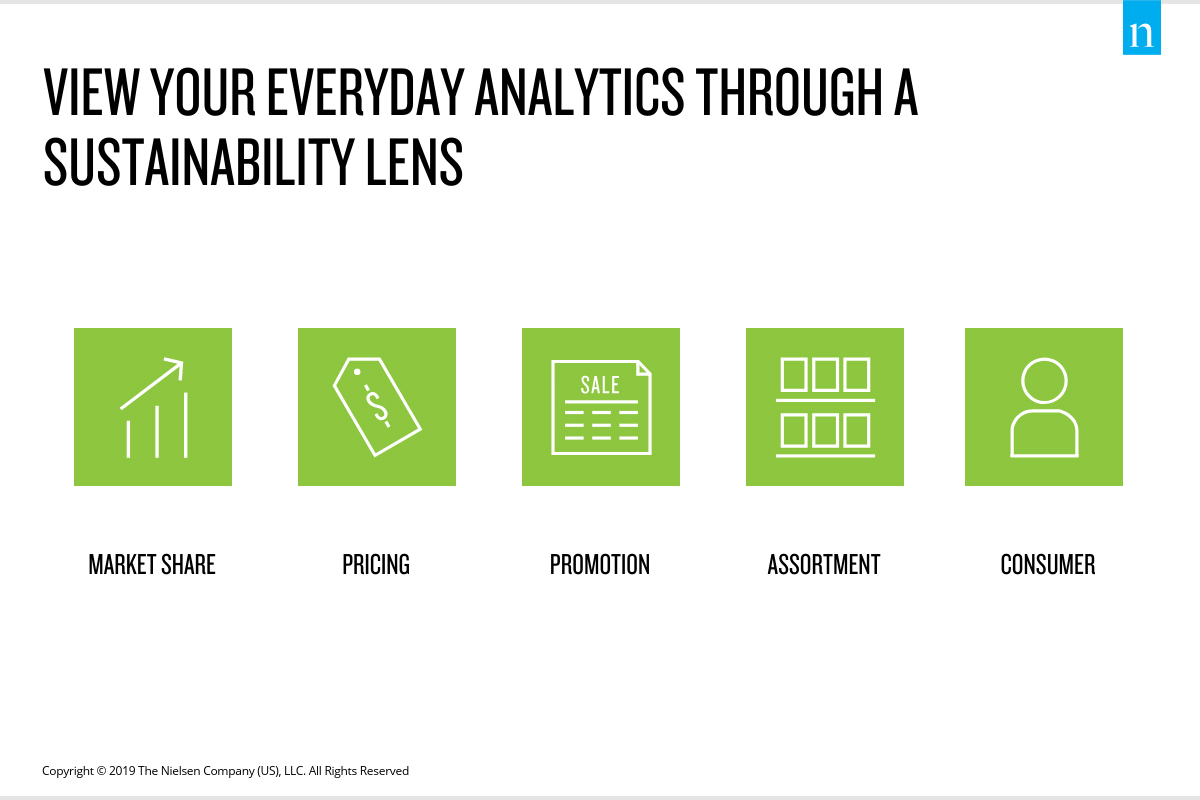
Identify What Sustainability Means for Your Brand
What does “sustainability” mean to your specific brand or company? Sustainability today encompasses a broad spectrum of different aspects across social responsibility, sustainable business practices, recyclable packaging and so much more. On top of this wide range of interconnected areas, numerous forces of change are working together to create new opportunities for brands to act. With this global context in mind, identifying the facet that resonates most with your brand is critical in identifying how you can make a real impact. From there you can build a relationship with your customers so they know what to expect from you and what your brand promise will deliver on. For example, if you’re a global manufacturer that uses water across your global supply chain, what are you doing to ensure the availability of fresh water in water-scarce regions around the world?
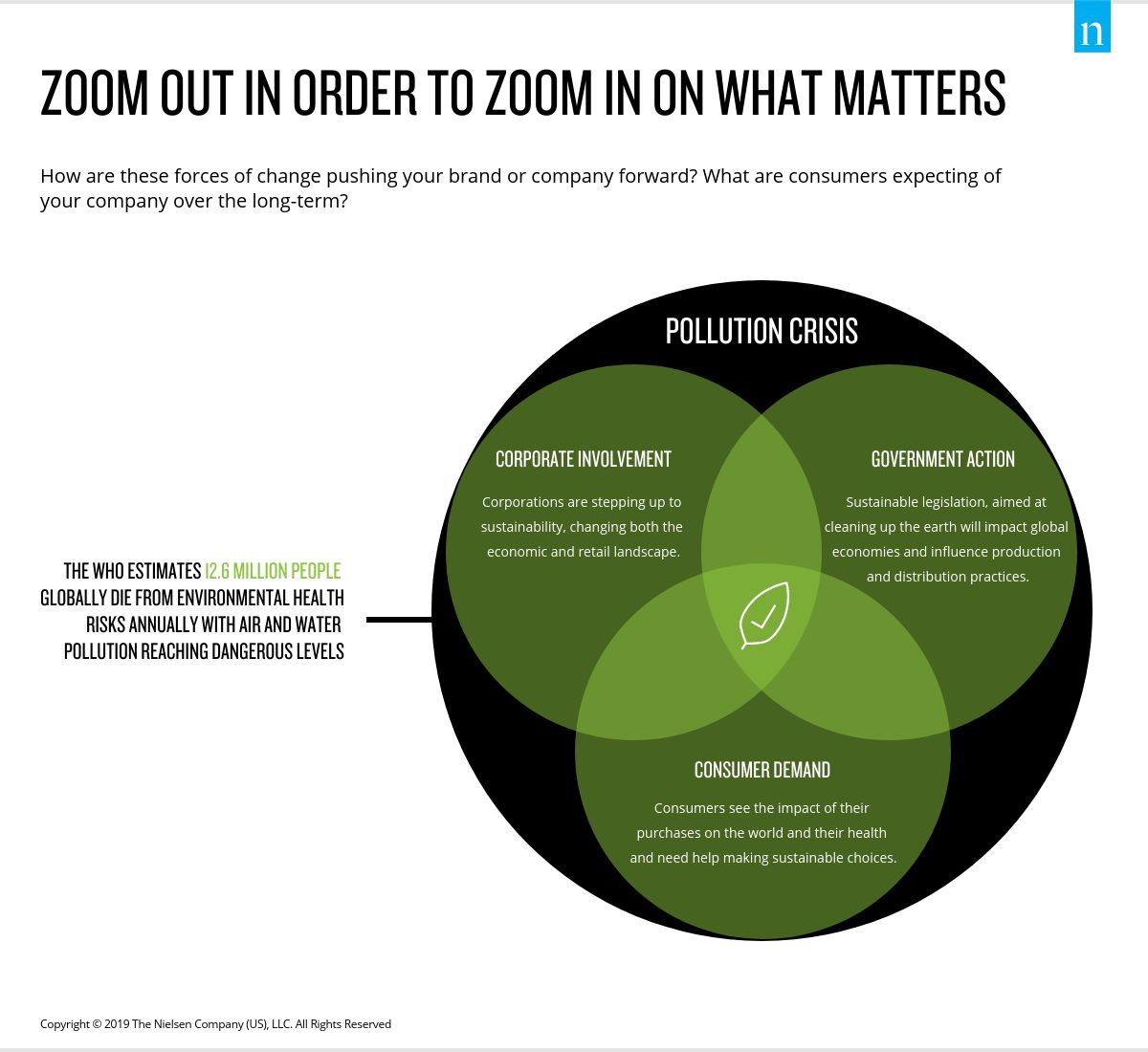
Bring Sustainability to Life for Shoppers
Once you understand what sustainability means across your product portfolio and brand identity, you need to bring it to life in-store, online and across the lifecycle of how your customers use your products. While traditional factors continue to influence consumers’ purchasing decisions, shoppers are increasingly looking for brands that deliver on their “Healthy for Me and Healthy for We” goals and priorities. This is an opportunity for brands to identify ways to make their lives better and stay in their baskets. If you’re a retailer, for example, could you provide in-store resources to help your consumers recycle old containers? If you’re a manufacturer, could you create a more seamless experience whereby your consumers can both enjoy your product and relieve the headache of navigating complicated recycling rules?
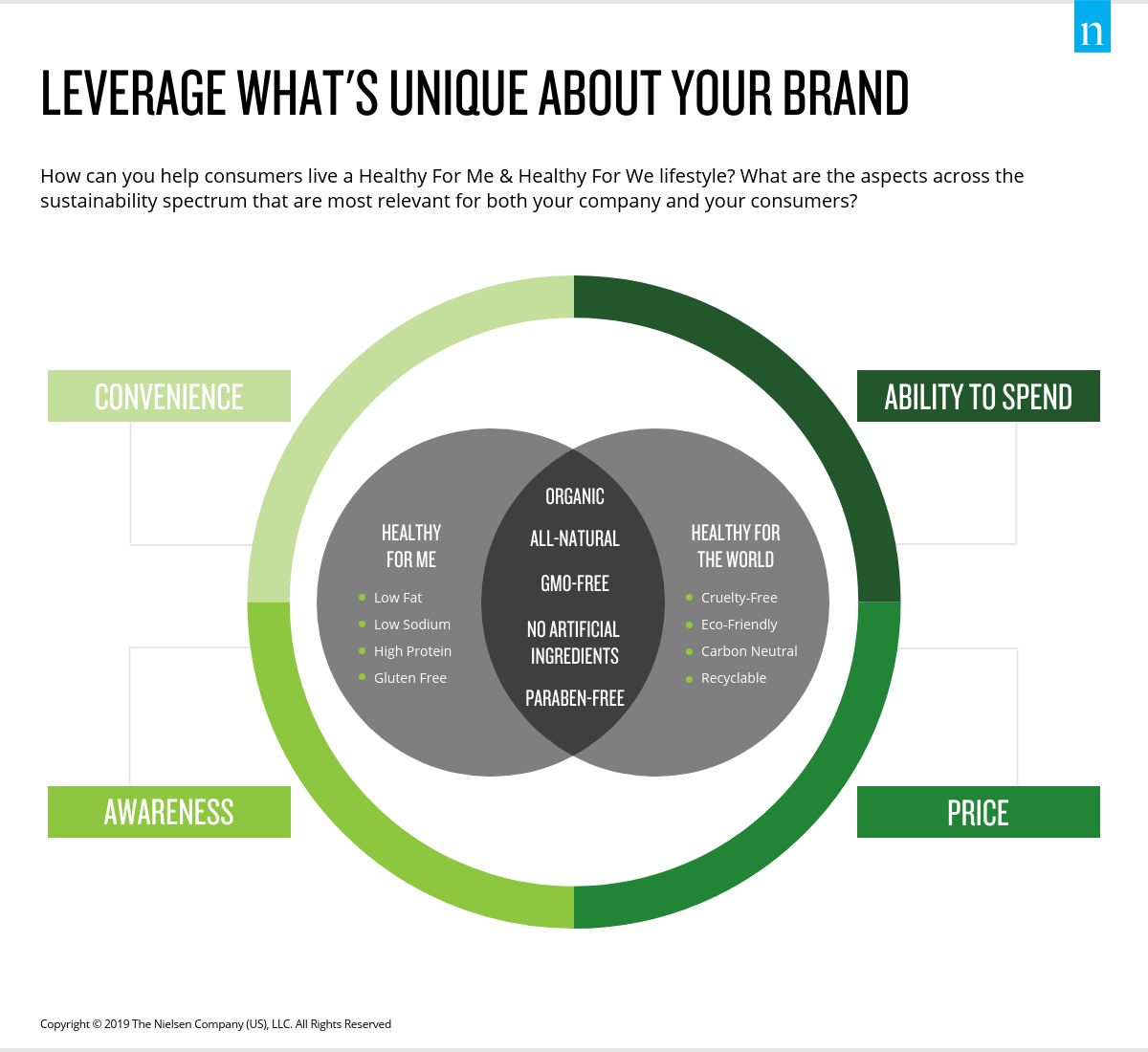
Build Sustainability into All Aspects of Your Supply Chain
There’s no way to execute through a sustainability lens without a supply chain and business processes that support sustainability holistically. Looking at everyday analytics through a sustainability lens, for example, involves considering how you’re engaging with your suppliers and with teams across all functions with sustainability in mind. This isn’t a marketing task. Instead, it’s something that an organization needs to build into its processes from the very beginning and across all stages of product development and growth. True commitment to sustainability will make your products better and enable more authentic and long-lasting connections with your customers.
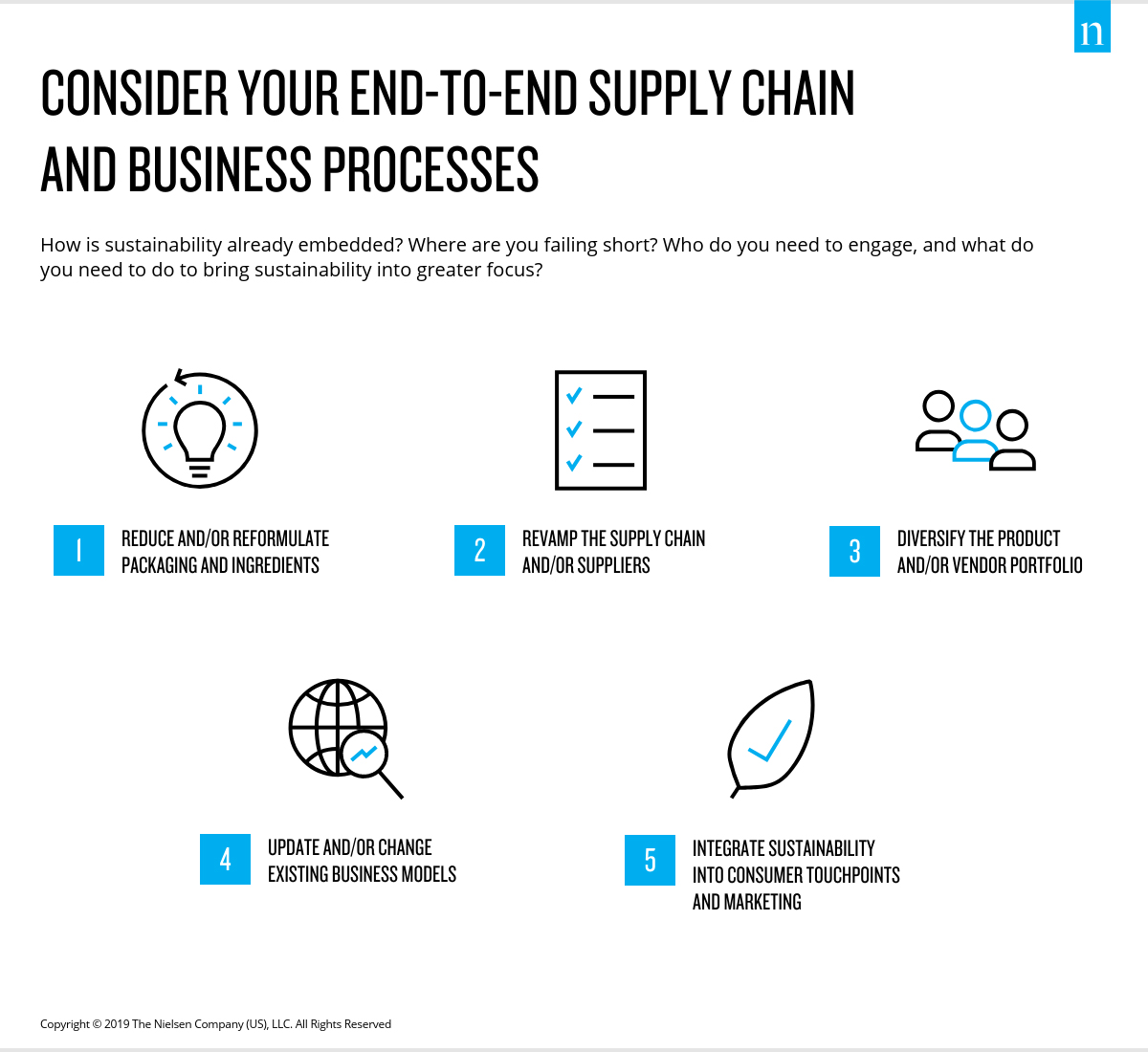
Road-Test Your Investments to See What Works
Once you’ve integrated sustainability into your end-to-end processes and teams, it’s critical to road-test your investments to see what works. Taking an iterative approach will allow you to learn from your initiatives through innovation testing, refining and growing your strategy as consumers engage and respond. By building your sustainability strategy into your brand messaging and portfolio optimization—and in decisions about which sustainability aspects you call out on your packaging and in-store signage—you can ensure your brand resonates authentically across all your consumer touchpoints.
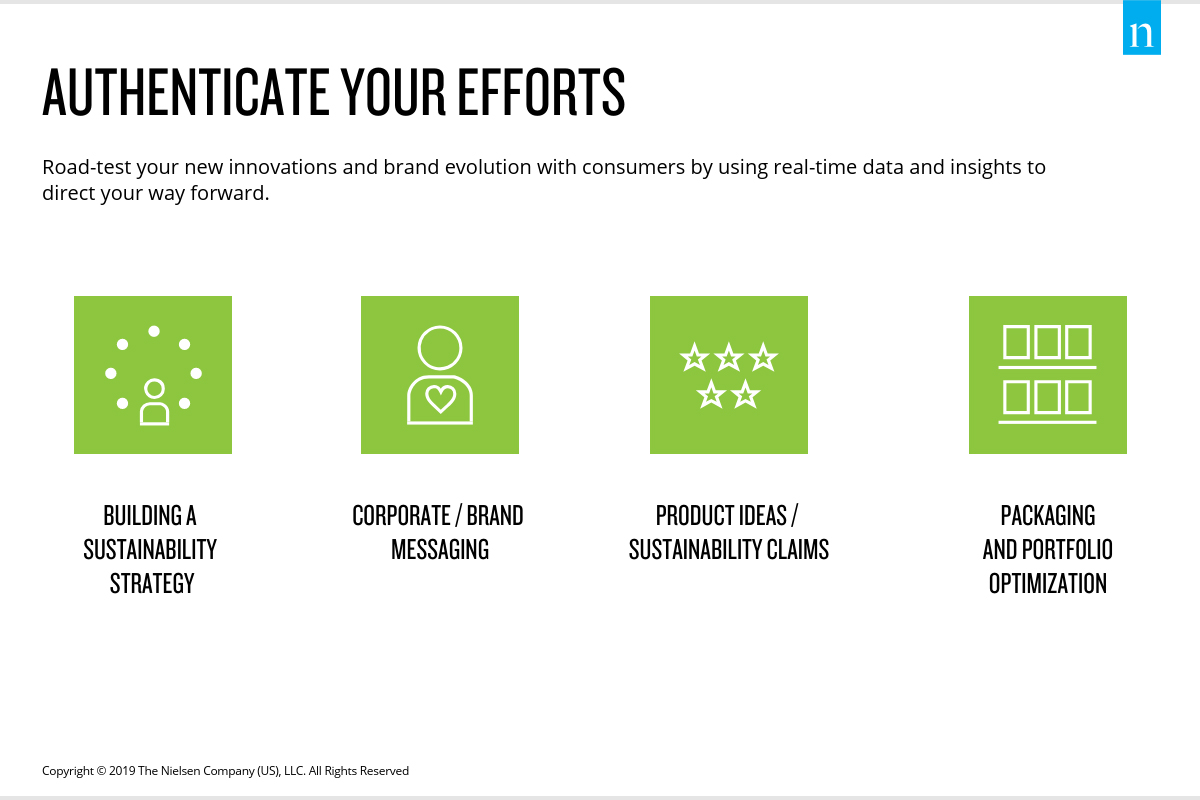
Connecting what’s unique about your brand with consumers’ sustainability expectations and needs can lead to expanded growth. As you act on collective sustainability needs in an authentic way for your brand, leverage the tools you already have: everyday analytics, innovation testing, consumer resonance and more.
Image credits: Nielson; Ryan Everton/Unsplash
Facebook’s Diversity Dilemma: The Elephant in the Room
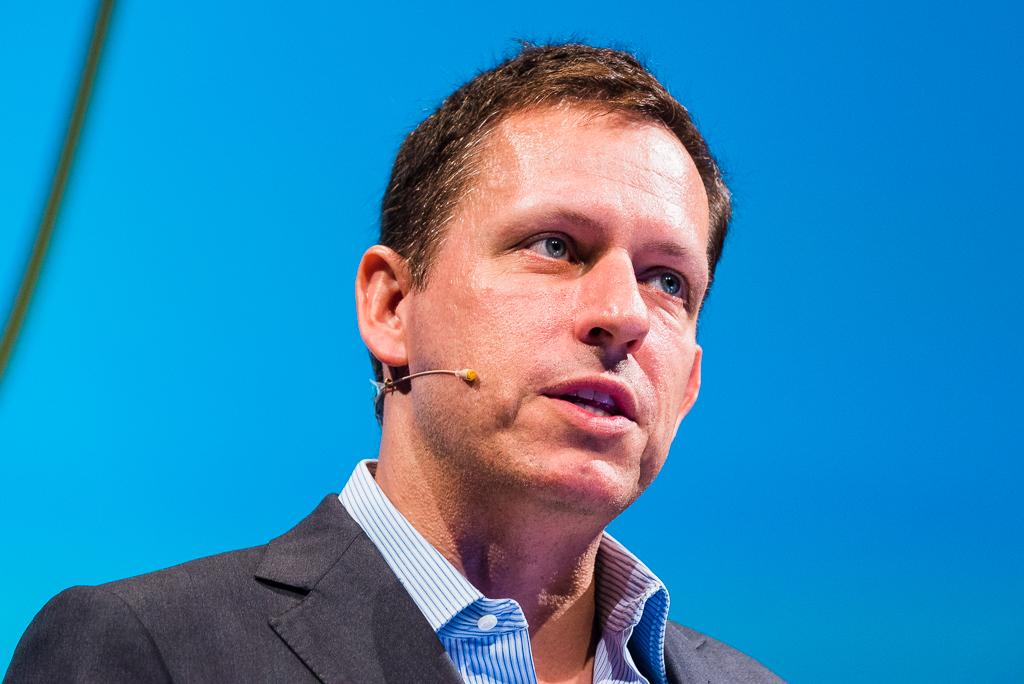
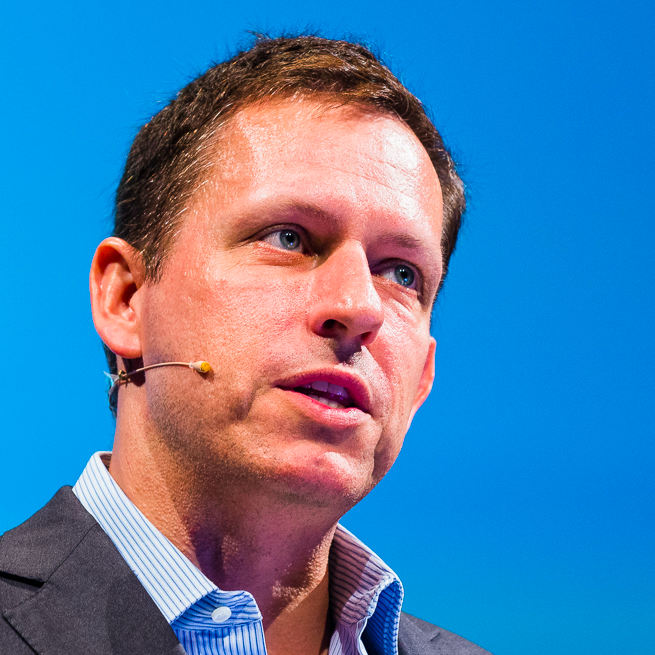
Facebook faces a long road ahead as stakeholders are still suspicious about the company’s dubious track record on user privacy, vetting reliable sources of news and its record on diversity - not to mention one controversial member of its board of directors.
Last week, we discussed Facebook’s struggles with its brand reputation and its ongoing challenges on the diversity and inclusion front. Although the social media giant has made significant strides in recruiting women in recent years, the company’s frequent appearance in headlines for all the wrong reasons may make it harder to recruit up-and-coming talent, as is the case with the fossil fuels sector.
An ongoing shake-up within Facebook’s board
The exit of two Facebook board members, Reed Hastings and Erskine Bowles, may be the most significant news to surface in recent days. As indicated by media reports in Forbes and The Hill, both have had their fair share of clashes with other board members.
Specifically, Tal Axelrod of The Hill noted, citing a 2017 New York Times report: “Hastings told fellow board member Peter Thiel that he intended to dock his performance review over his endorsement of then-Republican presidential-nominee Donald Trump."
The Times further cited an email from Hastings to Thiel at length:
“I’m so mystified by your endorsement of Trump for our President, that for me it moves from ‘different judgment’ to ‘bad judgment,’” Hastings reportedly told Thiel in an email. “Some diversity in views is healthy, but catastrophically bad judgment (in my view) is not what anyone wants in a fellow board member.”
If the name Peter Thiel doesn’t ring a bell, that’s the same Facebook board member who is known for extremist views on immigration.
As a Facebook board member, Thiel is also known for playing an instrumental role in the Trump campaign during the 2016 election. His activities included acting as a delegate for then-candidate Trump during primary season, nailing a coveted speaking position at the Republican Convention, publishing op-eds at key junctures, and providing financial support to the Trump campaign and Cambridge Analytica (the data company linked with Russia’s use of Facebook to spread propaganda during the 2016 election).
Thiel is also known for his relationship with white nationalism and anti-immigrant sentiment, and he continues to surface as an advisor to the Trump administration. As for Thiel’s direct influence on policy at Facebook, he was reportedly involved in a 2016 meeting between Facebook board members and conservative pundits Glenn Beck and Tucker Carlson, which reportedly resulted in an algorithm change in the newsfeed, followed by a sharp increase in clicks on “fake news.”
Diversity and a disaster for brand reputation
During the 2016 election, Facebook was widely criticized for enabling Thiel to remain on the board. Facebook CEO, chairman and co-founder Mark Zuckerberg pushed back in support of Thiel, based on the position that his presence on the board demonstrated respect for diversity of thought.
Nevertheless, it is difficult to separate Thiel’s thinking—especially on the topic of women’s rights—from the bottom-line impact of alienating the next generation of creators and innovators.
That’s something to keep in mind as activist shareholders push for an independent board chairman at Facebook. Trillium Asset Management, for example, lists how the social media giant has exposed itself to risk in recent years:
- Russian meddling in U.S. elections
- Sharing personal data of 87 million users with Cambridge Analytica
- Data sharing with device manufacturers, including Huawei that is flagged by U.S. Intelligence as a national security threat
- Proliferating fake news
- Propagating violence in Myanmar, India, and South Sudan
- Depression and other mental health issues, including stress and addiction
- Allowing advertisers to exclude black, Hispanic, and other “ethnic affinities” from seeing ads.
That’s all over and above the risk of losing out in the race to attract top female talent.
Facebook faces a long road ahead as stakeholders grow suspicious about the company’s dubious track record on user privacy, vetting reliable sources of news and its record on diversity. Until Facebook can correct these problems, it will still seem that the line between diversity and catastrophically “bad judgement” is a rather thin one for the social network.
Image credit: Dan Taylor/Wiki Commons